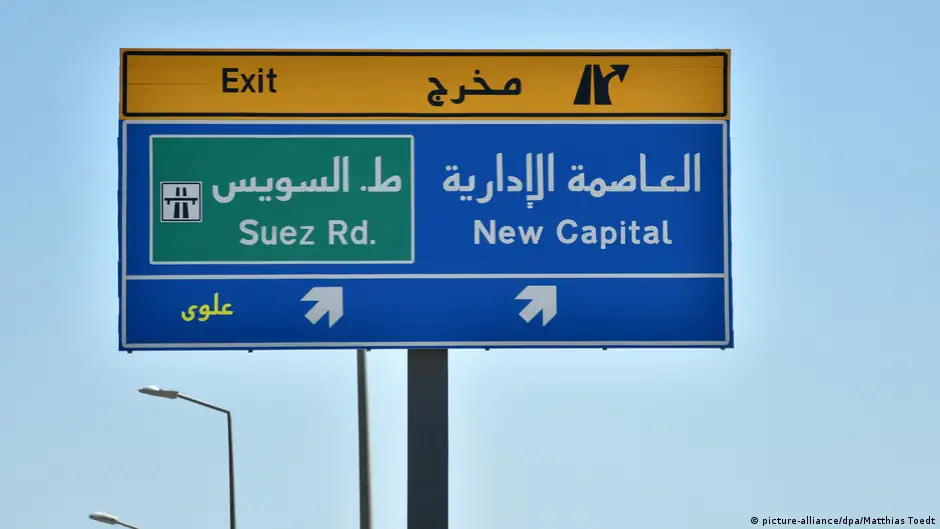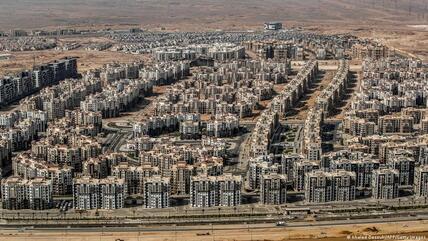Counter-revolution completed

A counter-revolution is also a revolution. Its goal is not necessarily the restoration of pre-revolutionary conditions. Rather, what it has in common with defeated revolutionary forces is that something new, albeit completely contradictory, is to be built on the ruins of the past.
The military regime of Abdul Fattah al-Sisi, which came to power on the back of the counter-revolution of 30 June 2013, appears to be obsessed with the concept of "new". This is evident from the new Suez canal, the new republic, the new capital and from the many cities now incorporating the attribute "new" into their names, such as the summer capital "New Alamein".
This renewal fever is driven on the one hand by the regime's self-realisation that it has an ideological vacuum to cover up; and on the other, by the appearance of raging, radical forces.
After more than a decade in power in Egypt, Abdul Fattah al-Sisi began his third term on 2 April with an inauguration ceremony in the new administrative capital and the swearing-in of the constitution before parliament in his new official residence. In doing so, he gave the official green light to the transfer of the government apparatus with all its institutions into the new capital, which doesn't have its own name, but is merely referred to by its function.
Old Cairo was the city of revolution
Two cities face each other: on one side overcrowded Cairo, the city of the revolution, which has conquered and liberated the public space in street battles inch by inch, taking possession of it at a tremendous cost in blood; and on the other the new capital, the city of the counter-revolution, a fenced-off fortress, away from the people.
Five years earlier in the new capital, Sisi inaugurated the Al-Fattah-al-Alim Mosque and the biggest cathedral in the Middle East. There'll be more buildings to open here, which is why the president contented himself with hoisting the Egyptian flag on the world's tallest flagpole.
It wasn't the first time such an action took place: after the January revolution and in October 2011, the military council had already hoisted the flag on the world's tallest flagpole and government propaganda promised that Egypt would be included in the Guinness Book of Records. But after a few months, the flag disappeared without further explanation and the mast's metal frame was left behind as one of Cairo's tallest radio towers.
The first time, the tallest flagpole was propagated as a reminder of the January Revolution 2011, or rather as a reminder of how the military was crushing everything it stood for. The second time, one can assume that the hoisting of the flag was intended to seal the victory of the counter-revolution. In both cases, the action serves to conceal Sisi's failure, while a pathetic rhetoric of superlatives is used to describe a banal metal scaffold.

An "iron curtain" between rich and poor
Egypt’s military regime is tirelessly modernising roads, public transport and industry across the country and erecting a luxurious administrative capital for the upper class. But the construction boom is primarily financed on credit – Cairo is racing headlong into a debt crisis. By Sofian Philip Naceur
No vision for Egypt
The president gave a lacklustre speech of moderate eloquence to deputies. In it, he described his seven-point plan for the coming six years and repeated the discourses of the past two terms of office almost word for word. There were no promises, no excuses, no apology for the ongoing economic crisis.
In summary, he referred in his speech to the turbulent international and regional environment before moving on to the emergent new world. The president is not wrong. A new regional order is indeed emerging, one that is also the result of the counter-revolution, the post-Arab Spring order.
When ideology manifests itself in physical form, in buildings and architecture, it attains its maximum rigidity, but at the same time, its maximum vitality. It becomes a place and a daily routine. With President Sisi's recent move into his new palace, the counter-revolution has come full circle. However, without any vision for the future of Egypt having found its way into the new capital.
© Qantara.de 2024
Translated from the German by Nina Coon